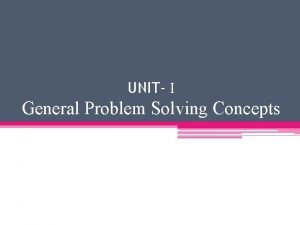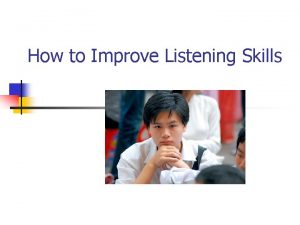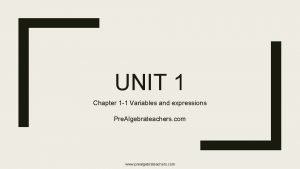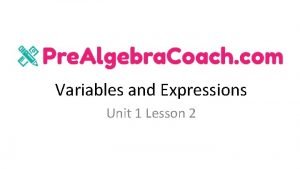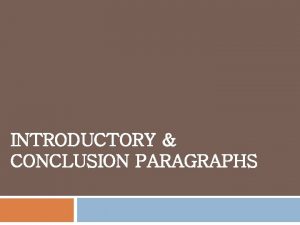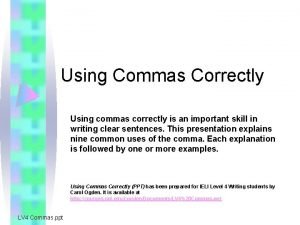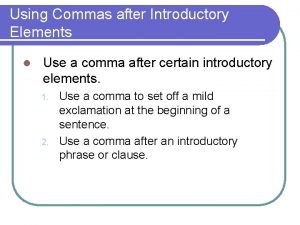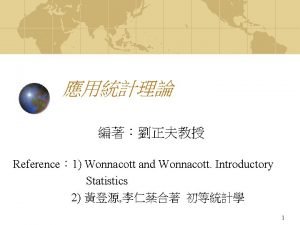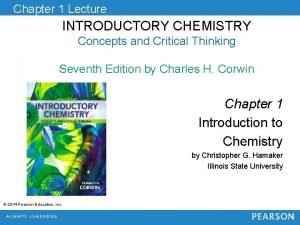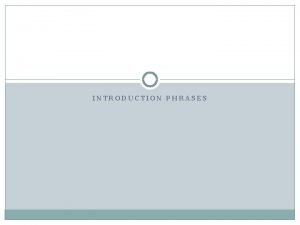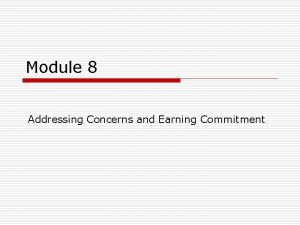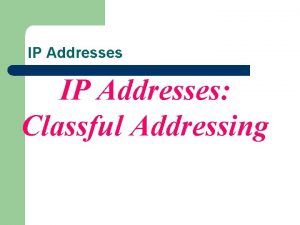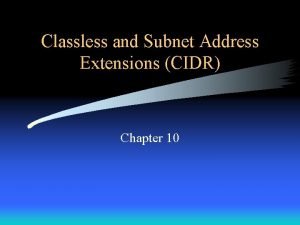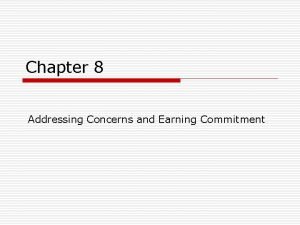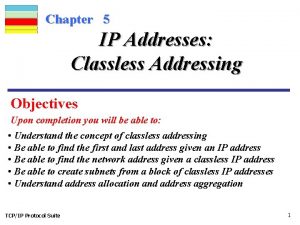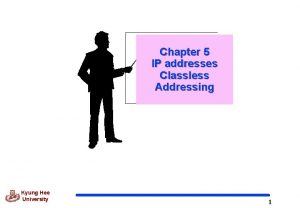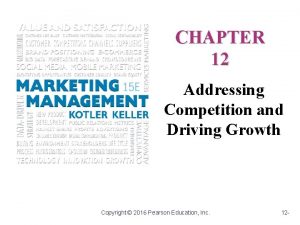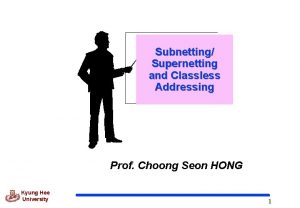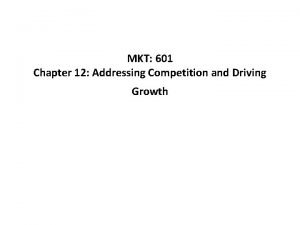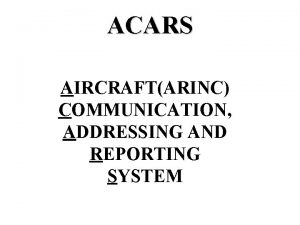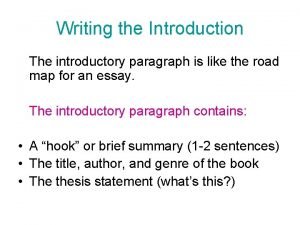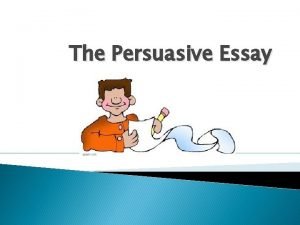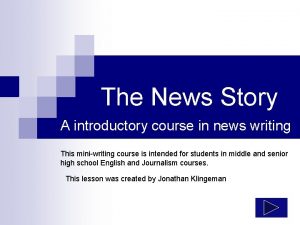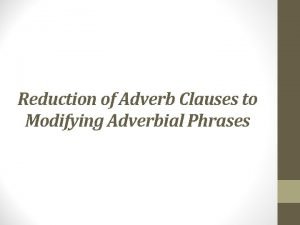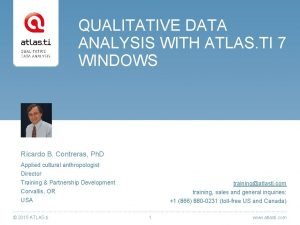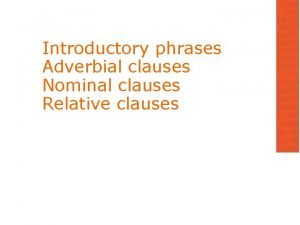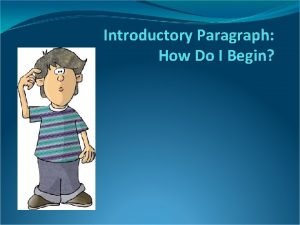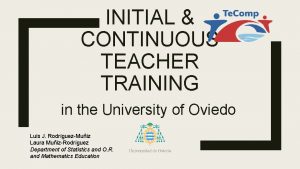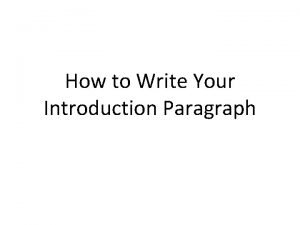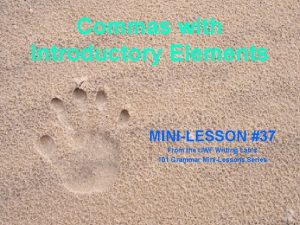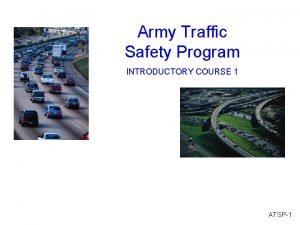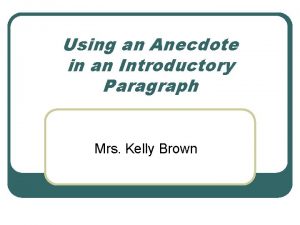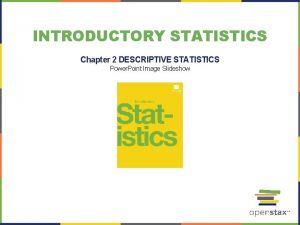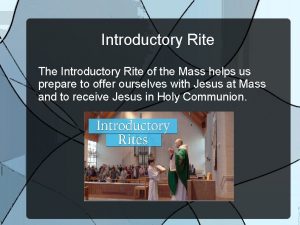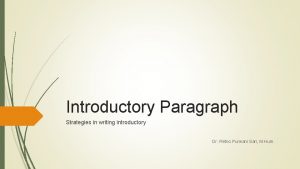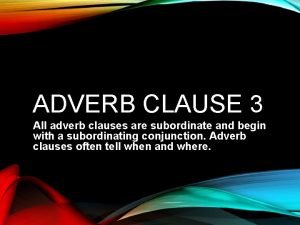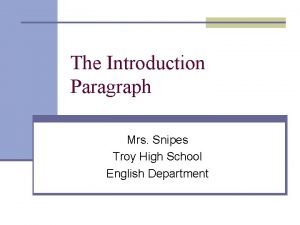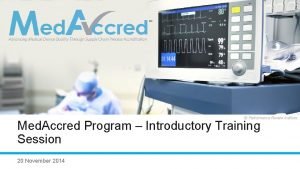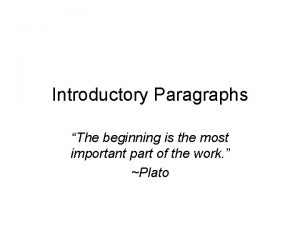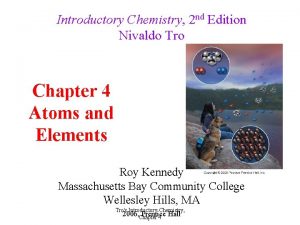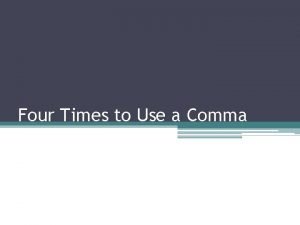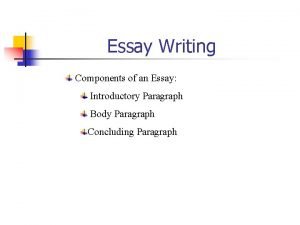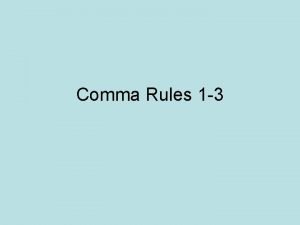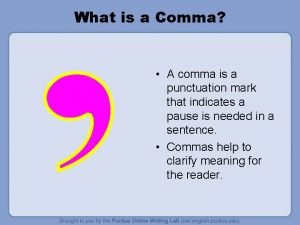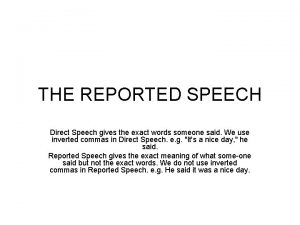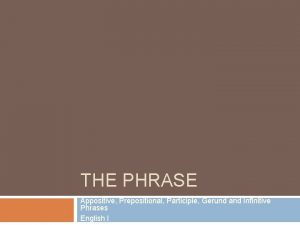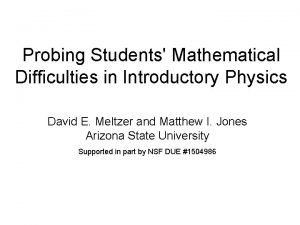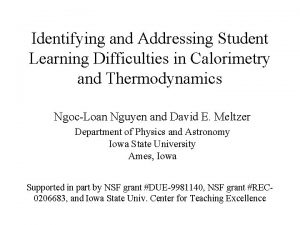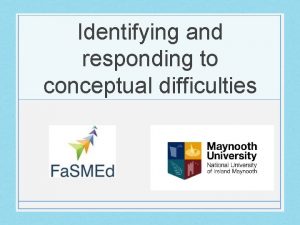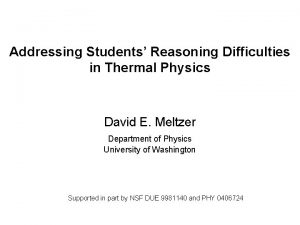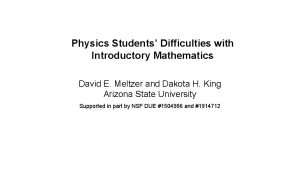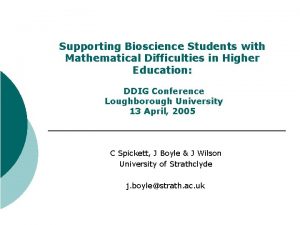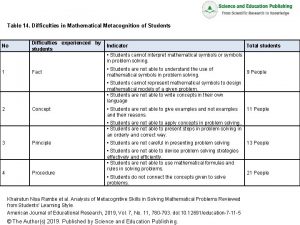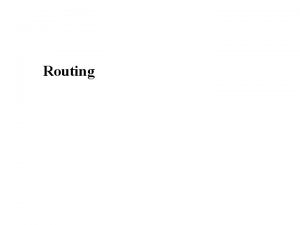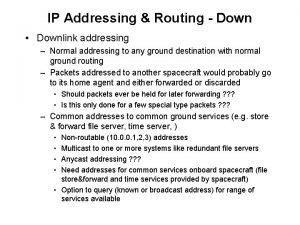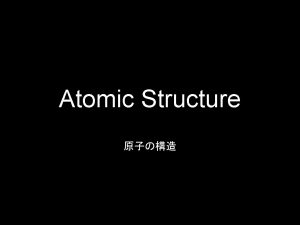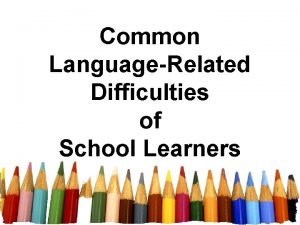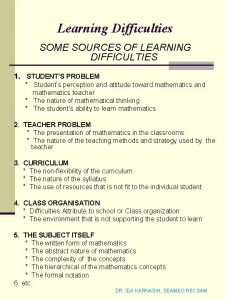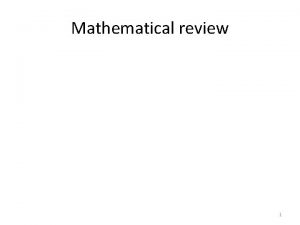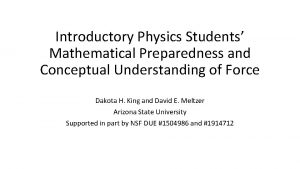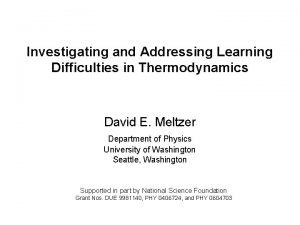Identifying and Addressing Students Mathematical Difficulties in Introductory












![Trigonometry Questions: Spring/Fall Semester Difference Error Rate (% incorrect responses) [*p < 0. 05] Trigonometry Questions: Spring/Fall Semester Difference Error Rate (% incorrect responses) [*p < 0. 05]](https://slidetodoc.com/presentation_image_h2/7610f1a86cfb4dd469b501fd5fa977dc/image-13.jpg)
![Trigonometry Questions: Spring/Fall Semester Difference Error Rate (% incorrect responses) [*p < 0. 05] Trigonometry Questions: Spring/Fall Semester Difference Error Rate (% incorrect responses) [*p < 0. 05]](https://slidetodoc.com/presentation_image_h2/7610f1a86cfb4dd469b501fd5fa977dc/image-14.jpg)
![Trigonometry Questions: Spring/Fall Semester Difference Error Rate (% incorrect responses) [*p < 0. 05] Trigonometry Questions: Spring/Fall Semester Difference Error Rate (% incorrect responses) [*p < 0. 05]](https://slidetodoc.com/presentation_image_h2/7610f1a86cfb4dd469b501fd5fa977dc/image-15.jpg)
![Trigonometry Questions: Polytechnic/Tempe Campus Difference Error Rate (% incorrect responses) [*p = 0. 01] Trigonometry Questions: Polytechnic/Tempe Campus Difference Error Rate (% incorrect responses) [*p = 0. 01]](https://slidetodoc.com/presentation_image_h2/7610f1a86cfb4dd469b501fd5fa977dc/image-16.jpg)

![Trigonometry Questions: Multiple-Choice vs. Non-Multiple-Choice (Higher Error Rate on Non-Multiple-Choice [Non-MC]) Error Rate Difference Trigonometry Questions: Multiple-Choice vs. Non-Multiple-Choice (Higher Error Rate on Non-Multiple-Choice [Non-MC]) Error Rate Difference](https://slidetodoc.com/presentation_image_h2/7610f1a86cfb4dd469b501fd5fa977dc/image-18.jpg)




















![Results on #2 [Torigoe and Gladding, 2007; 2011] • Results on #2 [Torigoe and Gladding, 2007; 2011] •](https://slidetodoc.com/presentation_image_h2/7610f1a86cfb4dd469b501fd5fa977dc/image-39.jpg)








![Results on #10 (Two equations, two unknowns) [Torigoe and Gladding, 2011] • Numeric version: Results on #10 (Two equations, two unknowns) [Torigoe and Gladding, 2011] • Numeric version:](https://slidetodoc.com/presentation_image_h2/7610f1a86cfb4dd469b501fd5fa977dc/image-48.jpg)






![Simultaneous Equations Questions in Calculusbased course, first semester (Polytechnic campus) [N = 91] 5 Simultaneous Equations Questions in Calculusbased course, first semester (Polytechnic campus) [N = 91] 5](https://slidetodoc.com/presentation_image_h2/7610f1a86cfb4dd469b501fd5fa977dc/image-55.jpg)











- Slides: 66

Identifying and Addressing Students’ Mathematical Difficulties in Introductory Physics Courses David E. Meltzer Arizona State University Supported in part by NSF DUE #1504986

Identifying and Addressing Students’ Mathematical Difficulties in Introductory Physics Courses David E. Meltzer Arizona State University Supported in part by NSF DUE #1504986 in collaboration with Matthew I. Jones and Dakota H. King

The Problem • Difficulties with very basic math skills impact performance of introductory physics students. • The difficulties are often not resolved by students’ previous mathematical training. • Students can’t effectively grapple with physics ideas when they feel overburdened in dealing with calculational issues. • (Therefore: ) Physics instructors need to deal with their students’ mathematical difficulties

Outline • Prevalence and nature of difficulties with trigonometry • Examples of difficulties with vectors, and effective remedies • Difficulties with algebraic symbols and operations – physics problems posed in symbolic form – physics students’ algebraic difficulties • Implications for instruction

Work to Date • Administer (and analyze) written diagnostic, given to 1400 students in 18 algebra- and calculus-based physics classes over four semesters at Arizona State University during 2016 -2017 • Carry out individual interviews with 65 students enrolled in those or similar courses during same period

Difficulties with Trigonometry • Many students are confused or unaware (or have forgotten) about the relationships between sides and angles in a right triangle. • Examples: Questions from a diagnostic math test administered at Arizona State University, 2016 -2017 (Administered as no-credit quiz during first week labs and/or recitation sections; calculators allowed)

Trigonometry Questions with samples of correct student responses


3.

Trigonometry Questions: Correct Response Rate, #1 -3 combined ASU Polytechnic campus, Spring + Fall average: Algebra-based course, 1 st semester, (N = 116): 37% Algebra-based course, 2 nd semester, (N =79): 48% ASU Polytechnic campus, Spring (2 -year average): Calculus-based course, 1 st semester, (N = 146): 66%

Results on Trigonometry Questions Errors observed: (i) use of incorrect trigonometric function (e. g. , cosine instead of sine), or misunderstanding of definition; (ii) unaware (or forgot) about inverse trigonometric functions, e. g. , arctan, arcsin, arccos [tan-1, sin-1, cos-1] – How to address these problems: It seems that many students require substantial additional practice and repetition with basic trigonometric procedures.

Factors Affecting Results Differences in results observed between: – Spring- and fall-semester offerings of same course – Offerings of same course on different campuses (Polytechnic campus in Mesa, main campus in Tempe) – Different type of courses (algebra- and calculusbased) and different semesters of same course (first-semester and second-semester) – Multiple-choice and non-multiple-choice versions of same questions
![Trigonometry Questions SpringFall Semester Difference Error Rate incorrect responses p 0 05 Trigonometry Questions: Spring/Fall Semester Difference Error Rate (% incorrect responses) [*p < 0. 05]](https://slidetodoc.com/presentation_image_h2/7610f1a86cfb4dd469b501fd5fa977dc/image-13.jpg)
Trigonometry Questions: Spring/Fall Semester Difference Error Rate (% incorrect responses) [*p < 0. 05] Algebra-based course, first semester; #1 -3 combined: ASU Polytechnic campus, Spring (N = 72): 67% ASU Polytechnic campus, Fall (N = 44): 58% Algebra-based course, second semester; #1 -3 combined: ASU Polytechnic campus, Spring (N = 52): 59% ASU Polytechnic campus, Fall (N = 27): 44% *Calculus-based course, first semester; #1 only: ASU Polytechnic campus, Spring (N = 104): 40% ASU Polytechnic campus, Fall (N = 98): 56%
![Trigonometry Questions SpringFall Semester Difference Error Rate incorrect responses p 0 05 Trigonometry Questions: Spring/Fall Semester Difference Error Rate (% incorrect responses) [*p < 0. 05]](https://slidetodoc.com/presentation_image_h2/7610f1a86cfb4dd469b501fd5fa977dc/image-14.jpg)
Trigonometry Questions: Spring/Fall Semester Difference Error Rate (% incorrect responses) [*p < 0. 05] Algebra-based course, first semester; #1 -3 combined: ASU Polytechnic campus, Spring (N = 72): 67% ASU Polytechnic campus, Fall (N = 44): 58% Algebra-based course, second semester; #1 -3 combined: ASU Polytechnic campus, Spring (N = 52): 59% ASU Polytechnic campus, Fall (N = 27): 44% *Calculus-based course, first semester; #1 only: ASU Polytechnic campus, Spring (N = 104): 40% ASU Polytechnic campus, Fall (N = 98): 56%
![Trigonometry Questions SpringFall Semester Difference Error Rate incorrect responses p 0 05 Trigonometry Questions: Spring/Fall Semester Difference Error Rate (% incorrect responses) [*p < 0. 05]](https://slidetodoc.com/presentation_image_h2/7610f1a86cfb4dd469b501fd5fa977dc/image-15.jpg)
Trigonometry Questions: Spring/Fall Semester Difference Error Rate (% incorrect responses) [*p < 0. 05] Algebra-based course, first semester; #1 -3 combined: ASU Polytechnic campus, Spring (N = 72): 67% ASU Polytechnic campus, Fall (N = 44): 58% Algebra-based course, second semester; #1 -3 combined: ASU Polytechnic campus, Spring (N = 52): 59% ASU Polytechnic campus, Fall (N = 27): 44% *Calculus-based course, first semester; #1 only: ASU Polytechnic campus, Spring (N = 104): 40% ASU Polytechnic campus, Fall (N = 98): 56%
![Trigonometry Questions PolytechnicTempe Campus Difference Error Rate incorrect responses p 0 01 Trigonometry Questions: Polytechnic/Tempe Campus Difference Error Rate (% incorrect responses) [*p = 0. 01]](https://slidetodoc.com/presentation_image_h2/7610f1a86cfb4dd469b501fd5fa977dc/image-16.jpg)
Trigonometry Questions: Polytechnic/Tempe Campus Difference Error Rate (% incorrect responses) [*p = 0. 01] *Algebra-based course, second semester; #1 -3 combined: ASU Polytechnic campus, Spring (N = 52): 59% ASU Tempe campus, Spring (N = 61): 35%

Trigonometry Questions: Course Difference Error Rate (% incorrect responses), #1 only [*p < 0. 05] ASU Polytechnic campus, Spring + Fall average: Algebra-based course, 1 st semester, (N = 166): 59% * Algebra-based course, 2 nd semester, (N = 106): 53% Calculus-based course, 1 st semester, (N = 202): 48%
![Trigonometry Questions MultipleChoice vs NonMultipleChoice Higher Error Rate on NonMultipleChoice NonMC Error Rate Difference Trigonometry Questions: Multiple-Choice vs. Non-Multiple-Choice (Higher Error Rate on Non-Multiple-Choice [Non-MC]) Error Rate Difference](https://slidetodoc.com/presentation_image_h2/7610f1a86cfb4dd469b501fd5fa977dc/image-18.jpg)
Trigonometry Questions: Multiple-Choice vs. Non-Multiple-Choice (Higher Error Rate on Non-Multiple-Choice [Non-MC]) Error Rate Difference (% incorrect responses), Non-MC−MC Course #1, Problem #2: +15 Course #1, Problem #3: +18 Course #2, Problem #2: +9 Course #2, Problem #3: +9 Course #3, Problem #2: +5 Course #3, Problem #3: +34 Course #4, Problem #2: +10 Course #4, Problem #3: +5

Trigonometry Questions: Summary • Regardless of course, semester, campus, or question type, between 30% and 70% of introductory physics students at ASU have significant difficulties with basic trigonometric relationships. • Students frequently tended to self-correct errors during interviews, suggesting that many of the errors were “careless” or due to insufficient review or practice.

Difficulties with Vector Concepts • Vector Concepts: Many students are confused about the fundamental meaning of vector direction, as well as the role of direction in determining the resultant of two or more vectors (Nguyen and Meltzer, 2003; Barniol and Zavala, 2014).

Vector Direction Question

Vector Direction Question All same direction

Results on Vector Direction Percent Correct Responses Calculus-based physics, second semester: 66% (N =29) Calculus-based physics, first semester: 51% (N = 104) Algebra-based physics, second semester: 40% (N = 52) Algebra-based physics, first semester: 40% (N = 72)

Vector Direction, Most Common Error

Vector Direction, Most Common Error X ✓

Vector Addition (Graphical) • Students have difficulty interpreting and manipulating vector quantities represented as arrows [Nguyen and Meltzer, 2003; Barniol and Zavala, 2014) Example: Add (or subtract) vectors A and B to find the resultant A B

Addition of Vectors

Addition of Vectors

Addition of Vectors Percent Correct Responses Algebra-based physics, second semester: 36% (N = 61) Calculus-based physics, first semester: 71% (N = 140)

Common Student Errors With Vector Addition • “Split the Difference” or “Bisector Vector”: + = • “Tip-to-Tip”: + =

Difficulties with Vector Addition How to address these difficulties: – Practice with a variety of vector orientations; introduce and use the “ijk” coordinate representation for vectors (Heckler and Scaife, 2015) – Design tutorial worksheet to aid students’ understanding of scalar (“dot”) product of vectors (Barniol and Zavala, 2016) – Provide extensive on-line practice and homework assignments related to frequently used vector procedures (Mikula and Heckler, 2017)

Physics Students’ Difficulties with Algebraic Symbols and Operations • Extensive investigations by Torigoe and Gladding (2007; 2011): Probed differences in University of Illinois students’ responses to physics problems posed in numerical and symbolic form. – In general, students tended to have more difficulties with questions in symbolic form. • Our investigation at Arizona State probed physics students’ responses to mathematical problems stripped of all physics context

Torigoe and Gladding (2011), Findings 1. Significantly higher proportion of correct responses on some types of numerical questions, not on others 2. Difference was greater for students in bottom quarter of class 3. Larger difference linked to difficulties with multiple and simultaneous equations, symbol confusion, and misuse of compound expressions.

Students’ Difficulties with Symbols Confusion of symbolic meaning: Students perform worse on solving problems when symbols are used to represent common physical quantities in equations, e. g. , “m” instead of “ 1. 5 kg” [Torigoe and Gladding, 2007; 2011) Example [University of Illinois]: Version #1: A car can go from 0 to 60 m/s in 8 s. At what distance d from the start at rest is the car traveling 30 m/s? [93% correct] Version #2: A car can go from 0 to v 1 in t 1 seconds. At what distance d from the start at rest is the car traveling (v 1/2)? [57% correct] Much worse!

Difficulties with Symbols (Torigoe and Gladding, 2007; 2011) • Confusion between similar symbols, e. g. , using v for v 1 and vice-versa. • Distinguishing between known and unknown information when both are represented by symbols • Misunderstanding compound expressions, e. g. , failing to specify m = 3 M or v = v 0/2 in the relevant general equation involving m or v.

From Torigoe & Gladding (2011):

From Torigoe & Gladding (2011): Sample solution for symbolic version: v 2 = v 02 +2 ad v 0 = 0 → v 2 = 2 ad → d = v 2/2 a a = Δv/Δt = v 1/t v = v 1 /2 d = v 2/2 a = (v 1 /2)2/2 a = (v 12 /4)/2(v 1/t) = (v 12 /4)/(2 v 1/t) = v 1 t 1 /8

From Torigoe & Gladding (2011): “Student” solution for numeric version: (1) a = Δv/Δt = 60/8 = 7. 5 (2) v 2 = v 02 +2 ad v 0 = 0 2 → v = 2 ad → (30) 2 = 2(7. 5)d 900 = 15 d 900/15 = d 60 m = d No algebra needed!
![Results on 2 Torigoe and Gladding 2007 2011 Results on #2 [Torigoe and Gladding, 2007; 2011] •](https://slidetodoc.com/presentation_image_h2/7610f1a86cfb4dd469b501fd5fa977dc/image-39.jpg)
Results on #2 [Torigoe and Gladding, 2007; 2011] •

Does complexity of expression play a role? In symbolic version, have d = (v 12 /4)/(2 v 1/t) → simplify to d = v 1 t 1 /8 Compared to, in numeric version: d = 900/15 → d = 60 Not equivalent operations!

Does complexity of expression play a role? • Probably, but evidence so far is not clear • Torigoe and Gladding noted confusion regarding meaning of symbols, not necessarily with algebraic manipulations

Algebra: Simultaneous Equations

Algebra: Simultaneous Equations • Do differences in students’ success rate between numerical and symbolic versions of same problem persist when simultaneous equations are involved? (E. g. , two equations, two unknowns)

From Torigoe and Gladding (2011): Mg − T = Ma TR = Iα [I = ½ MR 2; α = a/R] …→ Fnet = ma τnet = I α Mg − T = Ma TR = [½ MR 2][a/R] a=?

From Torigoe and Gladding (2011): Mg − T = Ma TR = Iα [I = ½ MR 2; α = a/R] …→ Mg − T = Ma TR = [½ MR 2][a/R] a=?

From Torigoe and Gladding (2011): Mg − T = Ma TR = Iα [I = ½ MR 2; α = a/R] …→ Mg − T = Ma TR = [½ MR 2][a/R] a=? a – y = bx cy = dx x =? Symbolic version

From Torigoe and Gladding (2011): Mg − T = Ma TR = Iα [I = ½ MR 2; α = a/R] …→ Mg − T = Ma TR = [½ MR 2][a/R] a=? 78. 4 – y = 8 x 0. 5 y = 2 x x =? Numeric version
![Results on 10 Two equations two unknowns Torigoe and Gladding 2011 Numeric version Results on #10 (Two equations, two unknowns) [Torigoe and Gladding, 2011] • Numeric version:](https://slidetodoc.com/presentation_image_h2/7610f1a86cfb4dd469b501fd5fa977dc/image-48.jpg)
Results on #10 (Two equations, two unknowns) [Torigoe and Gladding, 2011] • Numeric version: 49% correct (N ≈ 380) • Symbolic version*: 53% correct (N ≈ 380) *values of M and R not provided No significant difference (“…because students are forced to use the same procedure to solve both the numeric and symbolic versions. ” Torigoe and Gladding, 2011)

Our Findings: Significant Differences between Numerical and Symbolic Versions of Simultaneous-Equations Problem Summary of the Data • Algebra-based course: 70% correct on numerical version, 20% on symbolic version; • Calculus-based course: 70% correct on numerical version, 43% correct on symbolic version.

Algebra: Simultaneous Equations Correct Response Rate, ASU (% correct responses) Algebra-based course, second semester (N = 123): 70% [This is the “numerical” problem]

Algebra: Simultaneous Equations x cos (20°) = y cos (70°) x cos (70°) + y cos (20°) = 10 What are the values of x and y? Show all your steps. Note: The value for x should NOT include y, and the value for y should NOT include x. Correct Response Rate, ASU (% correct responses) Algebra-based course, second semester (N =150): 20 -30% (different campuses, slightly different versions)

Algebra: Simultaneous Equations ax = by bx + ay = c a, b, and c are constants. What are the values of x and y in terms of a, b, and c? Show all your steps. Note: The value for x should NOT include y, and the value for y should NOT include x. Correct Response Rate, ASU (% correct responses) Algebra-based course, second semester (N =150): 10 -20% (different campuses, slightly different versions) Only 10 -20% correct responses!

Algebra: Simultaneous Equations Sample of Correct Student Response

Difficulties with Equations • Interviews indicate that students who missed the first (numerical) problem had fundamental difficulties with arithmetic and/or algebra (e. g. , failing to isolate variables, failing to substitute expression from first equation into the second equation). • Many students who could solve the first (numerical) problem failed on one or both of the other two.
![Simultaneous Equations Questions in Calculusbased course first semester Polytechnic campus N 91 5 Simultaneous Equations Questions in Calculusbased course, first semester (Polytechnic campus) [N = 91] 5](https://slidetodoc.com/presentation_image_h2/7610f1a86cfb4dd469b501fd5fa977dc/image-55.jpg)
Simultaneous Equations Questions in Calculusbased course, first semester (Polytechnic campus) [N = 91] 5 x + y = 26 In the two equations below, a, b, c, and d represent (unknown) numbers, e. g. , 3, 8, 9, 14. What is the numerical value of x? ax = by 3 x = 2 y cx + y = d x=? (Your answer for x should have a, b, c, and d in it, but not y. ) 70% correct 43% correct

Numerical vs. Algebraic • Providing numerical versions of problems allows students to side-step difficulties with symbolic representation and algebraic operation – Problems can often be solved with purely arithmetic, non-algebraic operations • However, certain types of problems (“equationpriority”: Torigoe and Gladding, 2011) require algebraic operations for solution, for example: – simultaneous equations; – problems posed in purely symbolic form; – problems of form Ax + B = Cx + D

Other Difficulties with Symbols • Possible confusion due merely to replacing numbers by symbols • Is this a real difficulty for physics students?

Confusion due to replacing numbers by symbols • •

“Level 0”: Confusion due to replacing numbers by symbols What is the value of x? 49% correct 41% correct [First-semester (Fall 2017), calculus-based; N = 91] Mc. Nemar Test for Correlated Proportions: p = 0. 10

Difficulties with Mathematical Operations (Booth et al. , 2014) • Negative Sign, e. g. , moving a term without changing its sign; deleting or adding a negative sign; • Equality, e. g. , performing operations without maintaining balance on both sides of an equals sign; • Mathematical Property, e. g. , inappropriately applying the distributive property; • Fraction, e. g. , moving a term from the numerator to the denominator or vice versa All of these observed in our investigation

Why the Difficulties with Symbols? Some Suggestions Arising from the Interviews • In elementary math courses, “simplified forms” of equations are emphasized (i. e. , few messy symbols and functions) • Students get “overloaded” by seeing all the variables, and are unable to carry out procedures (e. g. , multiplying each term in an expression by a constant [symbol]) that they do successfully with numbers (e. g. , multiply through by a number) • Other procedural failures that occur more often with symbols: cancellation, factoring out a constant, retaining coefficients from one line to the next

Sources of Difficulties • Carelessness – Students very frequently self-correct errors during interviews – Evidence of carelessness on written diagnostic • Skill practice deficit: Insufficient repetitive practice with learned skills – E. g. , applying definitions of sine and cosine; factoring out variables in algebraic expressions • Inability to efficiently access previous learning

Implications for Instruction • Vectors – Essential for study of physics, and arguably not covered in a suitable manner during high school, or in college math courses – Consist of a relatively small and well-defined area of knowledge insofar as related to introductory physics – Difficulties addressed effectively by short-term, carefully targeted in- and out-of-class tutorials and assignments in physics courses (e. g. , Barniol and Zavala (2016), Mikula and Heckler (2017)

Implications for Instruction • Trigonometry – Essential, to some extent, for study of physics, and presumably covered thoroughly during students’ previous preparation – Consists of a relatively small and well-defined area of knowledge insofar as related to introductory physics – Difficulties might be addressed effectively by shortterm, carefully targeted in- and out-of-class tutorials and assignments in physics courses, designed to refresh students’ previously learned knowledge and skills

Implications for Instruction • Algebra – Essential, to some extent, for study of physics, and covered very extensively during students’ previous preparation – Consists of a relatively large and poorly defined area of knowledge insofar as related to introductory physics – Difficulties might best be addressed by guiding students to (1) explicitly identify known and unknown variables; (2) carefully check and re-check key steps in calculation, to minimize careless errors; (3) slow down, review, and resolve when possible (through alternative solution path) lengthy and/or complex calculations

Summary • Some mathematical difficulties relate to relatively narrow, well-defined procedures and may be subject to significant improvement by short-term, targeted instruction (e. g. , vectors, trigonometry) • Other difficulties are likely more long-standing, resistant to quick improvement, and not easily addressable within physics courses themselves – Examples: algebraic operations • Guidance to strengthen physics students’ selfchecking, “care-taking” skills offers greater hope for short-term improvements
 Flat addressing vs hierarchical addressing
Flat addressing vs hierarchical addressing Adjective
Adjective Non identifying adjective clauses examples
Non identifying adjective clauses examples Identify the essential
Identify the essential Mathematical economics vs non mathematical economics
Mathematical economics vs non mathematical economics Difficulties of improving quality business
Difficulties of improving quality business Vicenta ybardolaza
Vicenta ybardolaza 悅讀悅寫意
悅讀悅寫意 Difficulties in problem solving
Difficulties in problem solving What are the difficulties in listening
What are the difficulties in listening Financial difficulties are commonly caused by overspending
Financial difficulties are commonly caused by overspending Variables and expressions 1-1 answer key
Variables and expressions 1-1 answer key Numerical
Numerical Conclusion sentence for intro paragraph
Conclusion sentence for intro paragraph Introductory phrases and commas
Introductory phrases and commas Comma after introductory phrase
Comma after introductory phrase Wonnacott and wonnacott introductory statistics pdf
Wonnacott and wonnacott introductory statistics pdf Introductory chemistry concepts and critical thinking
Introductory chemistry concepts and critical thinking Phrase signal
Phrase signal Addressing concerns and earning commitment
Addressing concerns and earning commitment Classful addressing example
Classful addressing example Difference between classful and classless addressing
Difference between classful and classless addressing Earning commitment
Earning commitment Classless and classful
Classless and classful Classful and classless addressing
Classful and classless addressing Responsive anticipation and creative anticipation
Responsive anticipation and creative anticipation Address cont example
Address cont example Addressing competition and driving growth
Addressing competition and driving growth Aircraft communication addressing and reporting system
Aircraft communication addressing and reporting system Purpose of introduction
Purpose of introduction Must not sentences examples
Must not sentences examples Keeping your hands clean and dry persuasive essay
Keeping your hands clean and dry persuasive essay News story example
News story example Hook in an introduction paragraph examples
Hook in an introduction paragraph examples Introductory paragraph examples
Introductory paragraph examples Modifying phrases
Modifying phrases Introductory atlas ti course
Introductory atlas ti course Introductory paragraph literary analysis
Introductory paragraph literary analysis Nominal relative clause
Nominal relative clause Good introduction paragraph
Good introduction paragraph Introductory chemistry 4th edition
Introductory chemistry 4th edition Introductory chemistry 5th edition nivaldo j. tro
Introductory chemistry 5th edition nivaldo j. tro Introductory chemistry 5th edition nivaldo j. tro
Introductory chemistry 5th edition nivaldo j. tro Onedrive uniovi
Onedrive uniovi Introductory paragraph
Introductory paragraph What is a introductory element
What is a introductory element Army traffic safety program
Army traffic safety program Anecdote essay introduction
Anecdote essay introduction Chapter 2 descriptive statistics answer key
Chapter 2 descriptive statistics answer key Introductory rite
Introductory rite Bold pronouncement hook
Bold pronouncement hook Middle school introduction paragraph examples
Middle school introduction paragraph examples Introductory adverb clause
Introductory adverb clause Comma introductory clause
Comma introductory clause High school introduction paragraph
High school introduction paragraph Activity 1 introductory activity
Activity 1 introductory activity Introductory performance review
Introductory performance review Example of paragraph
Example of paragraph Nivaldo j. tro introductory chemistry
Nivaldo j. tro introductory chemistry Introductory elements examples
Introductory elements examples Minimum wage essay outline
Minimum wage essay outline Basic essay and paragraph format
Basic essay and paragraph format As well as commas
As well as commas What is the eucharistic prayer
What is the eucharistic prayer Introductory dependent clause
Introductory dependent clause Special introductory verbs
Special introductory verbs Appositive phrase and participial
Appositive phrase and participial








